The recent controversy over the lockdown in apartment towers in Flemington and North Melbourne caused many to ask: “What are those awful buildings?”, not least Annabelle Quince who produces the excellent Rear Vision program ABC RN, found here. The answer has a similar arc to last week's episode about Daceyville: a triumph of design, a failure of society.
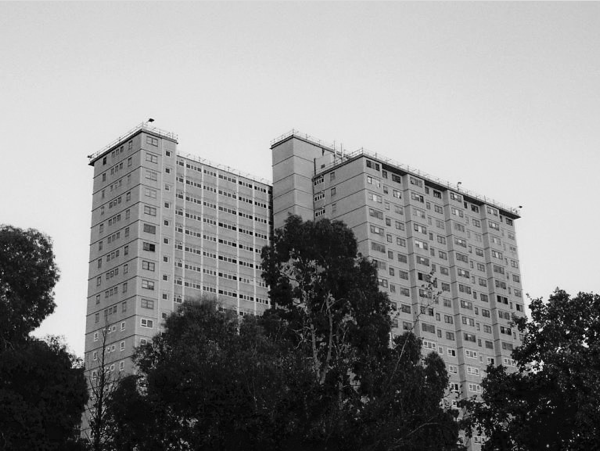
The Housing Commission of Victoria (HCV) was formed in 1938 and prior to WW2 started to experiment with precast concrete housing as a cost-effective system. After the war, with Melbourne facing a housing crisis, the HCV leased the former Commonwealth Tank Factory in suburban Holmesglen, to convert it into a factory to produce prefabricated concrete wall and floor panels for houses, low rise (and eventually high-rise) buildings.
The early times were productive, in two years to 1948, 1000 houses were produced. In the middle 50s the factory was making two to four storey walk up flats. The 1956 Olympic Village in Heidelberg West was built by the HCV, with several innovations, including housing athletes in individual houses for the first time, rather than the previous practice of dormitories. Most of the houses were brick, but we have found some evidence of precast concrete panels in this image of early construction.
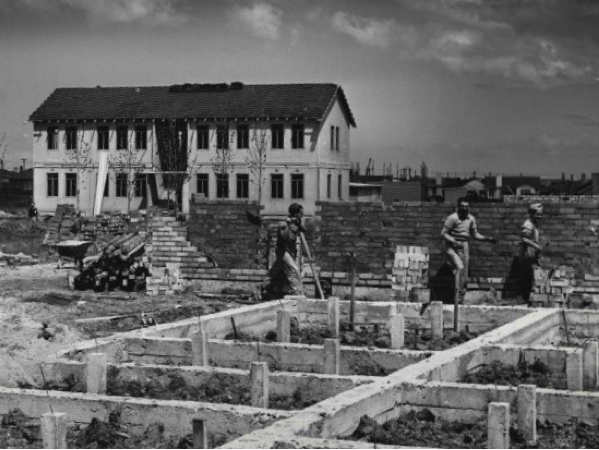
The village was handed back to HCV for public housing, but its history is one of struggle over 60 years, housing the poorest and most marginalized. Known as 'Heidelburglary' and later as 'Somaliaburg' for the 5,000 refugees settled in the suburb in the 1990s. More recently the area has undergone a renaissance with better social services and greater community awareness.
In 1965 the HCV commenced building high rise buildings with precast concrete panels. The design was simple: large wall panels, with one or two windows, span one or two rooms and floor sections with post-tensioning were stacked one on top of the other; commonly nicknamed a ‘house of cards’.
The quality and speed of concrete manufacture is high in the protective environment of a factory. The plan forms followed the letters of ‘S, T, Y, L, I, N, and C’, but there was little outward style to the buildings: regularly punched holes for windows, no balconies, no shading, no exterior ornament of any kind save alternating colours of cream and buff red in the coloured exposed aggregate finishes.

Over a period of less than 10 years, 47 towers between 20 and 30 storeys tall were built, with an average of 150 apartments in each. The construction process was stacking load bearing panels, interspersed with concrete floors. The buildings were praised for their technological innovation, and there is a key difference in the Australian design in comparison to those constructed overseas, particularly in the UK, where some 200 of these towers were built.
In Australia the floor panels had a series of cables for post-tensioning, which enabled the building to be tied together strongly, rather than relying solely on bolted joint as in the UK. This latter method led to a catastrophic failure at Ronan Point flats in 1968 when a woman, rising early for a cup of tea, accidentally lit leaking gas, caused the panels of her apartment to blow out. The weight of unsupported panels above fell on the ones below, causing catastrophic collapse of the entire corner of the building.

The resident survived, but four people died and 17 were injured. Following this disaster gas lines were removed to prevent explosions and many of buildings were demolished, revealing the poor levels of construction, so remedial work and changed structural construction techniques were introduced in 1971. It has been said that these changes prevented the Grenfell tower, built in 1974, from collapsing after the fire.

The Australian towers have survived and weathered remarkably well, despite their austere quality. Two examples provide insight. Atherton Gardens in Fitzroy has often been reviled, but surprisingly this year some residents have made a bid to have the estate listed on the Victorian Heritage Register because of its cultural significance. The estate has four towers with 200 dwellings in each, with an average occupancy of just over three per dwelling so there are over 2,400 residents.
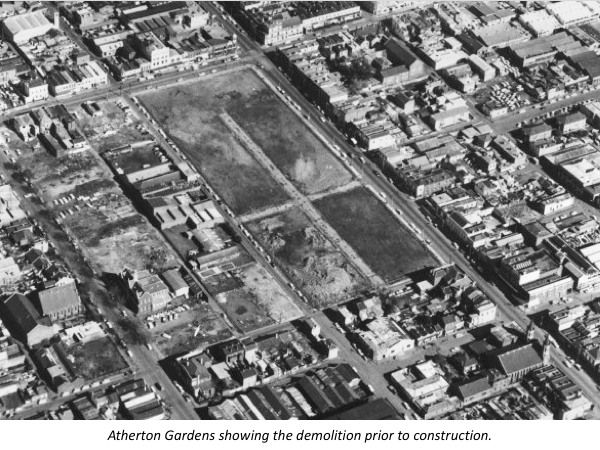
Commencing in the late 60s, eight streets (and every house and shop on them), were bulldozed to create the area for the four towers. Notably different in comparison to many estates in Sydney and in the UK is the well-maintained landscape between the buildings, in keeping with Le Corbusier’s idea of tower blocks set in green gardens.
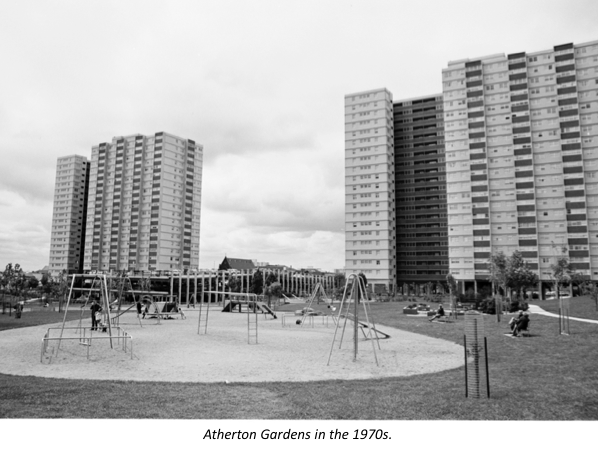
Our second example is Park Towers in South Melbourne. Built in 1968-9 on the area of four streets where 83 buildings were demolished. At 31 stories reaching 92 meters into the sky, it was the HCV’s tallest tower and, at the time, the tallest precast concrete load bearing wall panel building in the world, the third tallest building in Melbourne and the second tallest residential building in Australia.
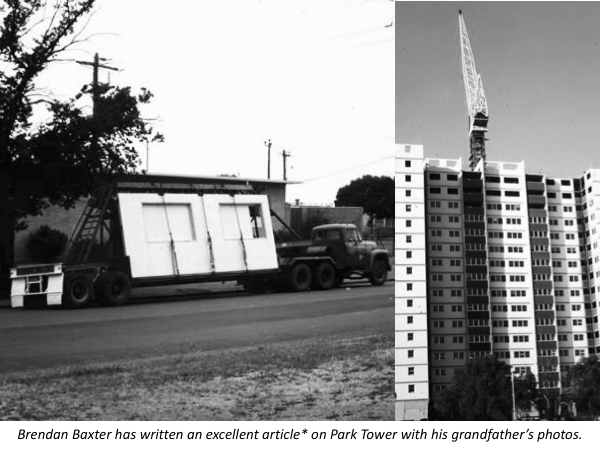
The towers are a technological marvel, but even more than last week's houses, they are a failure, this time in three ways. Firstly, they don't increase the density of population (the key measure, not dwellings). Towers with 200 units replaced 100 or so houses, but those houses had more occupants (as pp/Ha) in the slums than the high rises that replaced them.

Secondly, they are a social failure, being a concentration of disadvantage, that occurred all too frequently in housing commission areas, low or high rise. And thirdly, they're not that great internally. The solid concrete panels and windows have low insulation and the towers have suffered from condensation problems on the walls. They feel robust, but the poor-quality finishes make them as austere and unfriendly on the interior as they are on the outside.
47 towers in 10 years provided a housing stock of 7000 units for the HCV, never matched before or since, even though the need is more urgent than the 70s. It's an outrage that governments in Sydney and Melbourne can't see a way to increase public housing stock. But not in a return to high rises or houses, we know there is a middle way, which the Danish call ‘low and close’; the best combination of density and amenity for all occupants, salt and peppered through our suburbs.
Now called the ‘missing middle’, a government should show the initiative of the HCV in 1946 and buy a factory to make high-quality low-rise buildings for all. Six months ago, neo-liberalism would rule that out as socialism. But we are all Keynesians now.
This article is 1000 words long. This photo by Rennie Ellis says everything so much better.
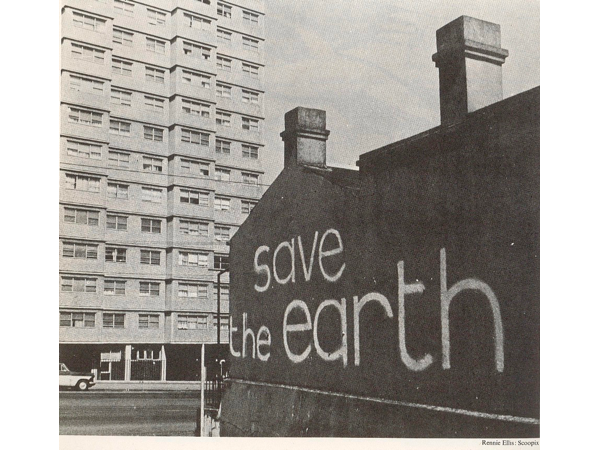
*Brendan Baxter’s excellent article on Park Towers can be found here.
plus 1 / plus one / +one is a collective of designers and artists promoting sustainability and Australian design. We don’t support social media in any form, rather you can contact +one at plus1.plusone.one@gmail.com.

